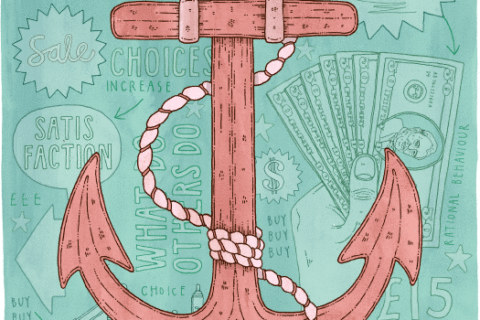Ralf Matthaes
The Mekong sub-region – stretching across Vietnam, Laos, Cambodia, Thailand and Myanmar – represents one of the strongest emerging market opportunities attracting the attention of some of the biggest global players. Bound together by the Mekong River with a combined population of over 200 million, it is an area rich in history and diversity – and one with significant potential for Western brands.
Yet the rapid rate of change in the region means that success is dependent on deep consumer insight, taking into account the distinct characteristics and varied stages of development in each country. Many of the best opportunities lie in areas that have undergone major political and social change in recent years – Myanmar is perhaps the most obvious example of this. In these fast emerging economies – so often associated with words like ‘promise’ and ‘potential’ – the demand for market research is clear, as brands strive to understand the values, needs and desires of people and apply this insight to unlock opportunities for growth.
The rising volume of research in the Mekong region is itself evidence of this opportunity. We opened our Cambodian office last summer and earlier this year, following the landmark lifting of sanctions, we secured a license to operate in Myanmar – the first of the international consumer insights consultancies to set up shop there.
Based on our experience, while there is clearly no ‘one-size-fits-all’ approach, there are some fundamental themes and principles that can help companies to navigate these new horizons.
Practical ambitions
Many consumer brands have approached us since Myanmar opened its market gates last year, keen to find out more about the country’s young and educated demographic – over half the population are under 30 and 18% of urban dwellers speak English as a second language. Yet Myanmar also represents the poorest population in the region. With monthly income averaging just $190 a month it is not surprising that household spending is driven largely by practical needs. Washing machines and refrigerators top consumers’ wish lists, while 38% of income is spent on basic food items. There is considerable opportunity for brands able to provide Myanmar’s families with these essential durables, with many FMCG companies already supplying products in small, affordable package sizes so that people can top up supplies only when needed.
Aligned with this practical spending, the Burmese have an instinctive cultural rejection of ‘bling’, or the pursuit of status through belongings, driven in part by the strong influence of Buddhism. Brands must therefore demonstrate a pragmatic, functional and value-driven message if they are to win over hearts and minds. In Cambodia and Laos, by contrast, increasing income levels are linked to a far greater appetite for using brand and product choices to express status or assert individuality. Urban Cambodians have a particularly keen sense of outward appearances, with almost three-quarters (73%) stating position and status in society as the most important aspect of their lives, while 69% prefer to use brands that ostensibly show their success. Those positioned to tap into this desire for individual assertiveness and status, are in a strong position to build their businesses in these markets.
Media engagement
Media channels in the Mekong are rapidly evolving, with TV to billboards to online channels offering a route to engage with the region’s vast consumer base. TV currently dominates the media landscape, with sets permanently switched on at home, in shops and in markets, – so long as the power is on, as Myanmar still suffers from regular power outages. You may even see families resorting to generators, or rigging electricity supply from the family motorbike when faced with unreliable power supplies. This affection for TV is nowhere more pronounced than in Myanmar, where around two-thirds of urbanites describe it as their favourite pastime. It may also come as a surprise that only one in ten families has a gas stove, but nearly three-quarters have a TV.
Brands looking to side-step the challenges of limited infrastructure and patchy electricity are also continuing to use outdoor media. Posters fight for attention wherever any form of advertising space is available, particularly in Cambodia and Myanmar where the dominant share of the economy is represented by the rural population. Brands looking to engage via online channels in Myanmar should remember that only 2% of the population actually has access to an internet connection, which will rapidly grow with the new licencing of Ooredoo and Telenor to help establish Myanmar’s new sought after communication links.
In the more developed regions of the Mekong, we see a rather different story. Online is booming in Vietnam, with 53% of urbanites using the internet at least four times a week, often to participate in social networks. Meanwhile, rising mobile ownership is providing a host of new opportunities for brands. Aspiration is high when it comes to mobile – almost half of the population (48%) in Cambodia expect to increase spend on mobile in the next year, while 61% of web users already access the internet via mobile. Mobile devices are also almost ever-present amongst Vietnamese as people engage with an increasing range of services on their phones. For many, Vietnam presents a snapshot – or crystal ball – of what could be in store for less developed markets like Myanmar.
Education, education, education
One of the themes that plays out most powerfully across the region is education. Governments are already pumping more money into the sector with the building of universities, colleges, secondary and vocational schools. No matter what their economic situation, Thai, Myanmar, Vietnamese, Laotians and Cambodians see education as the panacea to all their woes; especially vicariously through their children, as a stamp of having arrived and thriving.
This is particularly true in Cambodia and Myanmar, where one of the most profound impacts of military rule was a narrowing of access to education. Outside of basic food essentials, the majority of household spending is dedicated to schools or higher education, showing the priority attached to improving the prospects of their children in a fast-developing future.
Brand campaigns with a strong educational theme or offering free or discounted resources – whether books, stationery or online learning tools – are resonating strongly with people. Energy drinks brands are seeing real success across the region by positioning themselves as improving powers of concentration among students and increasing educational performance.
Aligning brands with the future
There is little doubt that these relatively fragile economies, complete with rapidly developing urban cultures and a growing middle class, can bring huge rewards. The similarities across these markets – namely the young demographic and rapid adoption of technology – make them exciting, if challenging, frontiers.
While the rate of progress in these countries is perhaps what weaves them most closely together, it is also clear that the lower Mekong basin is a tapestry of very different histories, cultures and consumer preferences. In each case, brands must adopt media and distribution strategies that reflect regional realities. The key is whether brands can keep pace with the rapid changes to ensure their brand is in the right place to take advantage of the dynamics in-market.
Ralf Matthaes isRegional Managing Director of TNS Indochina and Myanmar


